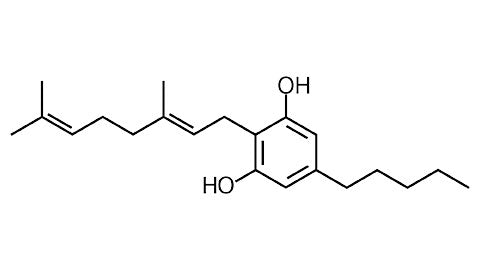Posted on March 27 2020
Ever since the 1970's people have known about cannabis (called "marijuana" for decades) and THC - the compound that makes you high when you smoke it. But little else was really well known among the general population.
Over the past two years or so, as legalization has spread across the country and cannabis use has gone mainstream, the world has quickly come to know CBD, and other terms like "cannabinoids" and "terpenes" have entered the lexicon. I'm not talking about folks in the industry, but the average random person on the street.
About 2 years ago I realized CBD had arrived when I took a trip from the northeast down to a southern Bible Belt state (full prohibition down there) and a devout Baptist family member was casually mentioning that he and his wife can't live without their morning CBD dose. I was shocked! Of course *I* know all about the benefits of CBD, but here's a religious, anti-pot, "just say no" southerner casually talking up how great CBD is - he gets it at the local corner store with his milk and bread.
Today, an estimated 20% of all Americans are taking CBD products. It's gone mainstream.
Cannabinoids and Terpenes
While people know about THC, and now CBD, most folks still don't realize that there are over 400 compounds in cannabis. THC and CBD are the two most prevalent, and thus most well-known, but there are hundreds more waiting to be explored. We know varying amounts about some of them: CBG, CBC, CBN, THCV, THCVA, CBDA, and more. These, collectively, are known as "cannabinoids."
There are also compounds called "terpenes" in the plant, which most folks generally consider as flavors and scents, which is true but leaves them under appreciated. Terpenes also have medicinal properties and play a role in the way the human body reacts to cannabis. For example, Linalool is commonly found in lavender and imparts that well known scent and is used for it's relaxing effects. Eugenol is an aphrodisiac and is what gives cloves their distinctive flavor and scent. You know that pine spray in a can you can get at Christmas time to get a pine tree scent with a fake Christmas tree? That's Pinene, the terpene that's dominant in pine trees but also found in cannabis. This is why, depending upon the strain and how much of one terpene it contains versus another, some cannabis smells and tastes more lemon-like (from Limonene), or more citrus-y, or more earthy, etc.
Legalization Spurs Education
Legalization has allowed research of this magical plant. Now that scientists and doctors aren't afraid of being arrested for possessing cannabis plant material in their labs, they're free to poke and prod and learn about all of these amazing compounds. As such, our collective knowledge is exploding! We're learning more and more about terpenese and all of these other so-called "minor cannabinoids" found in the plant, including CBG.
CBG - A Magic Bullet?
CBG is more clinically known as Cannabigerol which is the non-acidic form of Cannabigerolic Acid, the so-called "mother molecule" from which all of the other cannabinoids are derived. I think about it sort of like a stem cell -- a generic cell that can go on to become a liver cell or a skin cell or whanot.
During development of the plant, all of the CBG eventually goes on to become CBD, THC, etc. By the time the plant is matured and ready for harvest, nearly all of the CBG has been converted to THC, CBD, CBN, CBC and the like, leaving very small, trace amounts of actual CBG left. This is one of the reasons why CBG is currently so expensive -- it takes a LOT of crop to generate a small amount of CBG. Breeders are only just starting to hunt for high-CBG strains, and folks aren't really cultivating specifically for CBG yields at this point.
But lab testing has shown that CBG kills antibiotic-resistant "super bugs!" I cannot stress enough how incredibly important that is. With the high use of antibiotics these days, we have seen the emergence of MRSA - Methicillin-resistant Staphylococcus aureus, a bacterium that causes deadly infections that are more difficult to treat than most strains of staphylococcus aureus -- or staph -- because it's resistant to our commonly-used antibiotics. Doctors and scientists have been sounding the alarms now for a few years because they're powerless against these superbugs. Until now, perhaps. As noted, lab testing has shown that CBG actually kills these bugs! Nature to the rescue.
I really cannot overstate the importance of this discovery: this could be a watershed moment, like the discovery of penicillin! It angers me to think that we could have figured this (and more) out 40 years ago if it weren't for politically-motivated cannabis and hemp prohibition, but that's a topic for another blog.
This is why we will start seeing many more CBG-based products such as the CBG Hand Sanitizer from Caduceus Science which is a natural fit for this cannabinoid.
In addition to its anti-microbial properties, CBG has also been seen in lab testing to show anti-inflammatory properties, help with glaucoma, prevent growth and spread of certain cancer tumors, and more. Considering the "entourage effect" of cannabinoids (i.e. 2 or more together work much better than either alone), it makes sense that we're starting to see a lot of CBG/CBD combo products announced lately.
I'm particularly excited about the future of this cannabinoid, as we continue to research and learn, and more products come to market.


